1740
THE FOUNDING OF THE UNIVERSITY
The University of Pennsylvania was founded by Benjamin Franklin, an inventor, writer and future founding father. Franklin envisioned a university that would prepare students for leadership in government, business and public service.
1852
PENN ENGINEERING IS BORN
With the opening of its School of Mines, Arts and Manufactures, the University established one of the nation’s first engineering schools, heralding its historically impressive position in professional education. Within a few years, the School had 4 professors and 22 students.

A course syllabus, circa 1855. Courses consisted of about thirty lectures and cost five dollars. Fees were collected by the custodian.
1872
A SCIENTIFIC SCHOOL
As interest in engineering grew after the Civil War, the University Trustees created a Scientific School, which took up the East Wing of the newly constructed College Hall. Renamed the Towne Scientific School in 1875, the School offered classes in Chemistry, Metallurgy, Civil Engineering and Mechanical Engineering.
“The hours for the scientific students were long and home preparation was heavy.”— Coleman Sellers, Jr., B.S. 1873, M.S. 1876
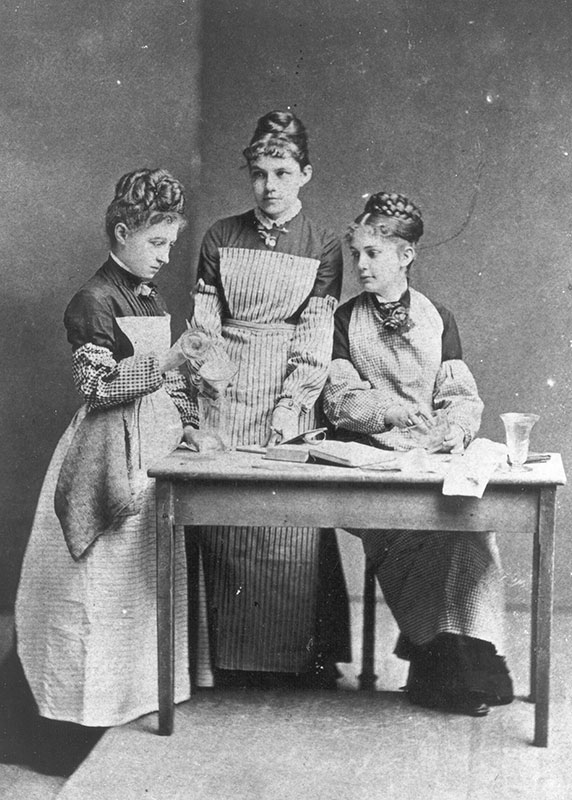
The first women were enrolled in the Towne Scientific School in 1876. Considered “special students,” they could take courses but were not eligible to receive a degree. Pictured here are Gertrude K. Peirce, Anna L. Flanigen, and Mary T. Lewis.

Dynamic Engineering students, Class of 1887.

Students working in the Mining and Metallurgy classroom, circa 1891.
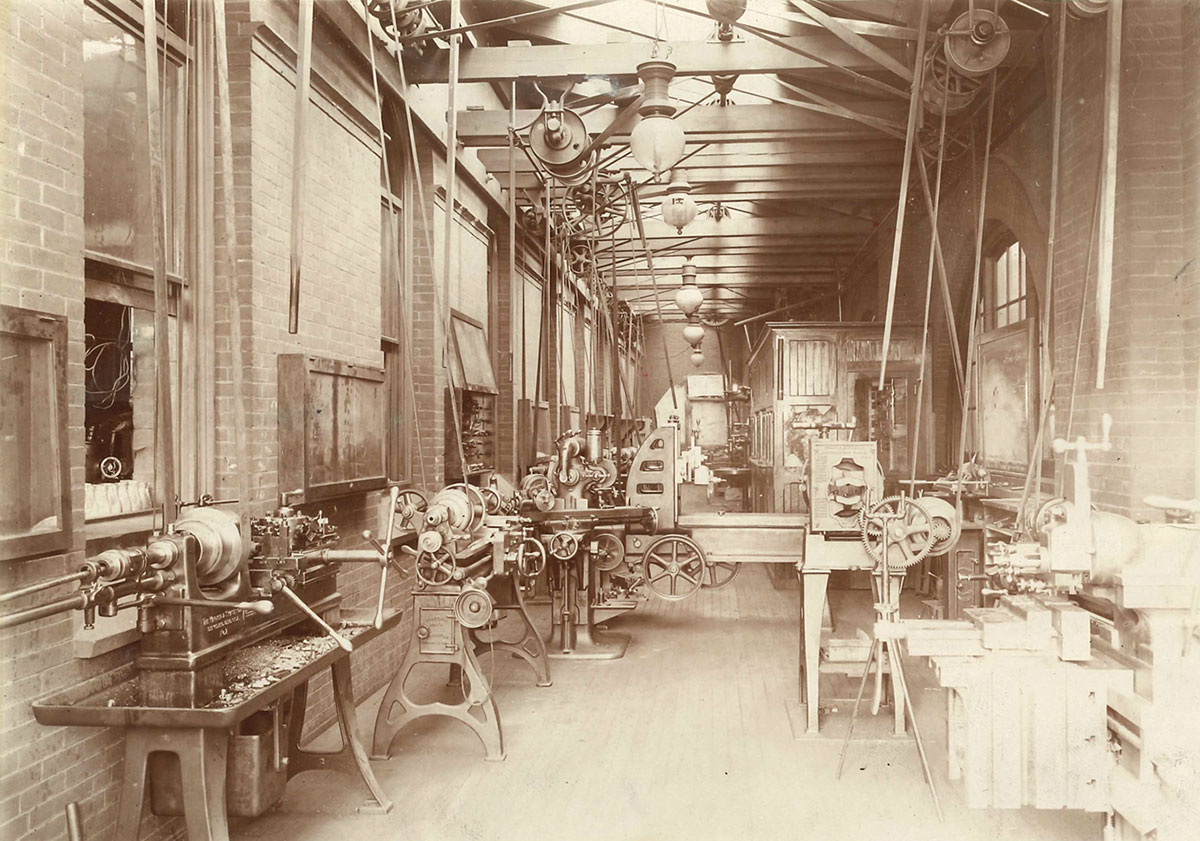
A new building dedicated to Mechanical and Electrical Engineering opened in 1892. An adjacent power station had testing equipment for students to run.


Philadelphian Joseph Hunter Lewis, pictured here with the Class of 1892, was the first African American to earn a Mechanical Engineering degree from Penn.
1893
DEVELOPING DEPARTMENTS
As enrollment in the Towne Scientific School soared, the Department of Mechanical and Electrical Engineering was established with two new buildings on campus. The University also opened a course in Chemical Engineering, the oldest of such courses in continuous existence
1906
THE TOWNE BUILDING OPENS
The Towne Building, named for former University Trustee John Henry Towne, Esq., was dedicated. The journal Engineering News called it “the finest, largest, and best equipped structure devoted to instruction in engineering in the United States, if not in the world.”

When it opened in 1906, the Towne Building was the largest building on campus.

The Mechanical Engineering machine shop within the Towne Building, 1906.

Frederick Raymond Weimert, who earned a B.S. in Chemical Engineering in 1912, in the chemistry lab, circa 1910.
1923
ELECTRICAL ENGINEERING GETS ITS OWN SCHOOL
The Department of Electrical Engineering, established in 1914, became The Moore School of Electrical Engineering in honor of its donor, electrical wire manufacturer Alfred Fitler Moore.

The former Pepper Musical Instruments factory was dedicated as the new home of The Moore School of Electrical Engineering in 1926 with the confident prediction that it would be the “greatest school of its kind in America.”

Engineering students pose at Walnut Park Plaza, 1927.
1935
THE WORLD’S LARGEST COMPUTING MACHINE
Engineers set up the New Deal-funded Differential Analyzer in the basement of The Moore School. This mechanical computing machine could solve in minutes problems that once took months to solve manually.

Approximately 30 feet long and 10 feet wide, the Differential Analyzer had 37,761 parts. Women programmers operated the machine, which ran nearly constantly, during World War II, computing ballistics tables.
1946
ENIAC: THE FIRST COMPUTER
To meet the U.S. Army’s need for faster calculations during and after World War II, the University dedicated ENIAC, the world’s first electronic large-scale, general-purpose digital computer. The first course in computing was offered that same year.

“Thee day ENIAC was introduced to the world was one of the most exciting days of my life. The demonstration was fabulous. ENIAC calculated the trajectory faster than it took the bullet to travel. We handed out copies of the calculations as they ran.”– Betty Jean Jennings, ENIAC programmer
1951
CHEMICAL ENGINEERING EXPANDS
Building on a long tradition of chemical engineering at the University, the standalone Department of Chemical Engineering was established, independent of Chemistry.
1952
BIOENGINEERING BEGINNINGS
The Electromedical Division of The Moore School was established as the first significant laboratory effort in its field in the country. A program in Biomedical Electronic Engineering began a decade later, becoming the nation’s first Ph.D. program in this field.

A founding father of Biomedical Engineering, Herman P. Schwan established the Electromedical Division of The Moore School and later served as chair of the Department of Bioengineering.
1954
WOMEN ENROLL AS UNDERGRADUATES
Women were admitted to the Schools of Engineering as undergraduates for the first time. Dr. Doris Kuhlmann-Wilsdorf, the first woman to join the faculty, was hired as Research Associate Professor of Metallurgical Engineering in 1957.
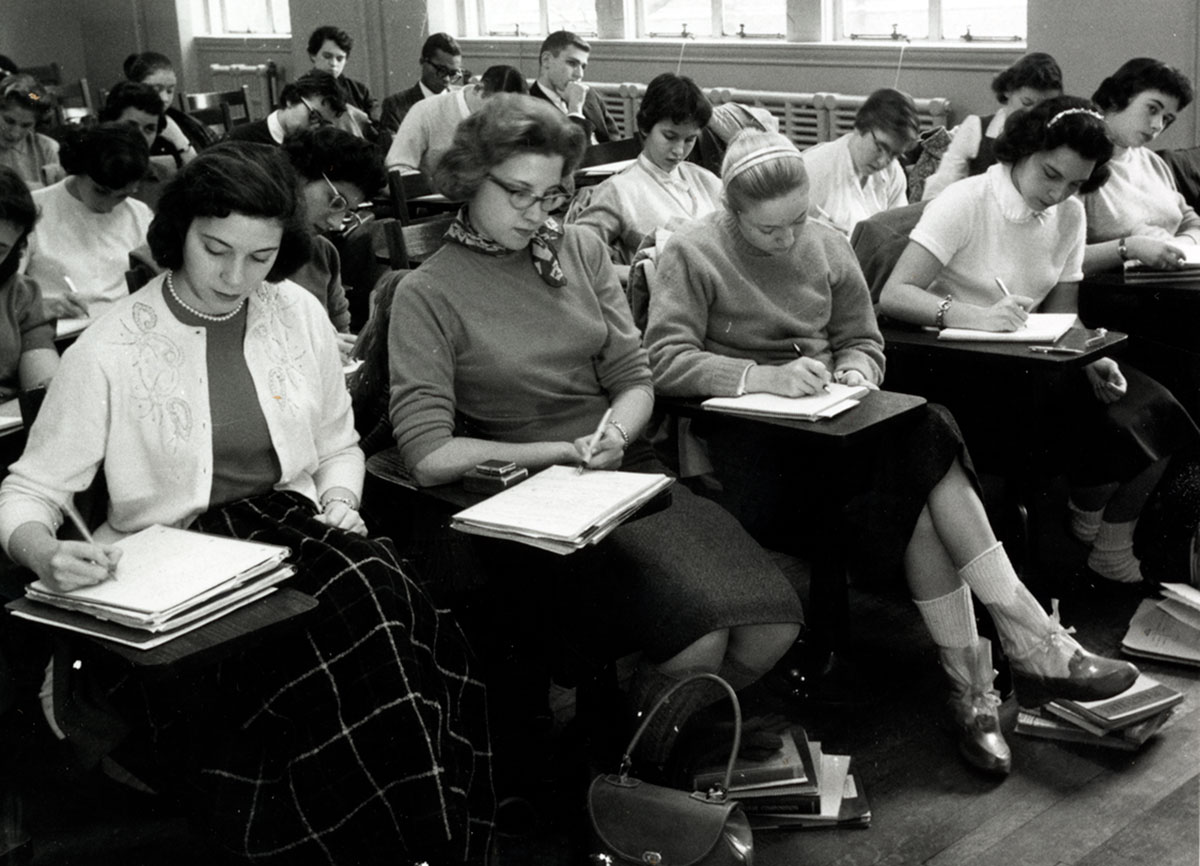
A co-ed classroom, circa 1960.
1960
PENN JOINS THE SPACE RACE
After winning a Department of Defense grant to research materials for the space race, the University established the Laboratory for Research on the Structure of Matter. A new LRSM building opened in 1964 and became the center for materials science research at Penn.

The new Laboratory for Research on the Structure of Matter linked physicists, chemists, engineers and computer scientists, marking an important new direction for modern science.
1965
FIRST COMPUTER SCIENCE DEGREE
Richard Wexelblat received a Ph.D. in Computer Science from Penn, becoming the first person to receive a doctorate from a recognized graduate program in Computer Science. A separate undergraduate program in Computer Science was first offered in 1972.
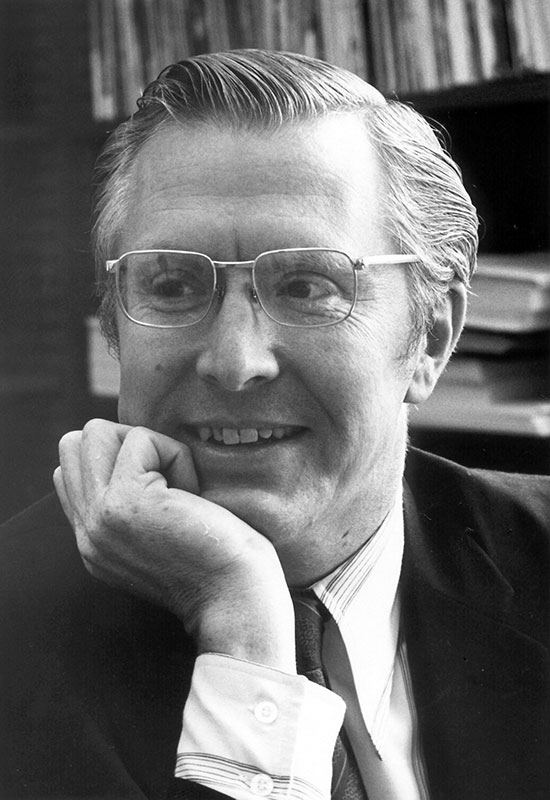
In 1972, the University’s four engineering schools merged into a single College of Engineering and Applied Science. Arthur E. Humphrey served as the first dean.
1977
WOMEN IN EVERY STANDING FACULTY
With the promotion of Dr. Ruzena Bajcsy to Associate Professor of Computer Science, women held tenured faculty positions in every school at Penn for the first time in the University’s history.
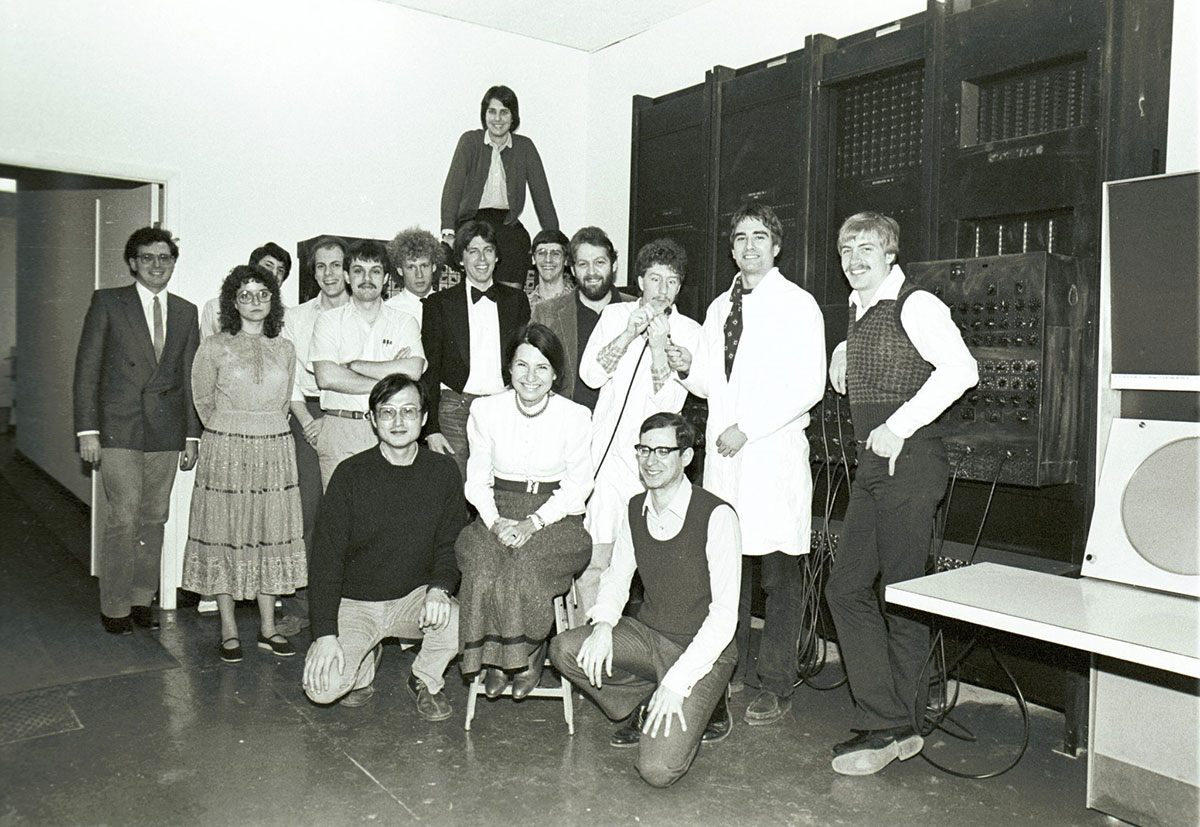
Dr. Ruzena Bajcsy (center) poses with other members of the GRASP Lab, circa 1984. In 1985, Bajcsy became the first woman to chair the Department of Computer Science.
2003
A NEW ERA OF BUILDING BEGINS
Under the leadership of Dean Eduardo Glandt, new buildings reflect the growing importance of engineering at Penn: The Melvin J. and Claire Levine Hall opened in 2003, Skirkanich Hall in 2006, and the Krishna P. Singh Center for Nanotechnology in 2013.
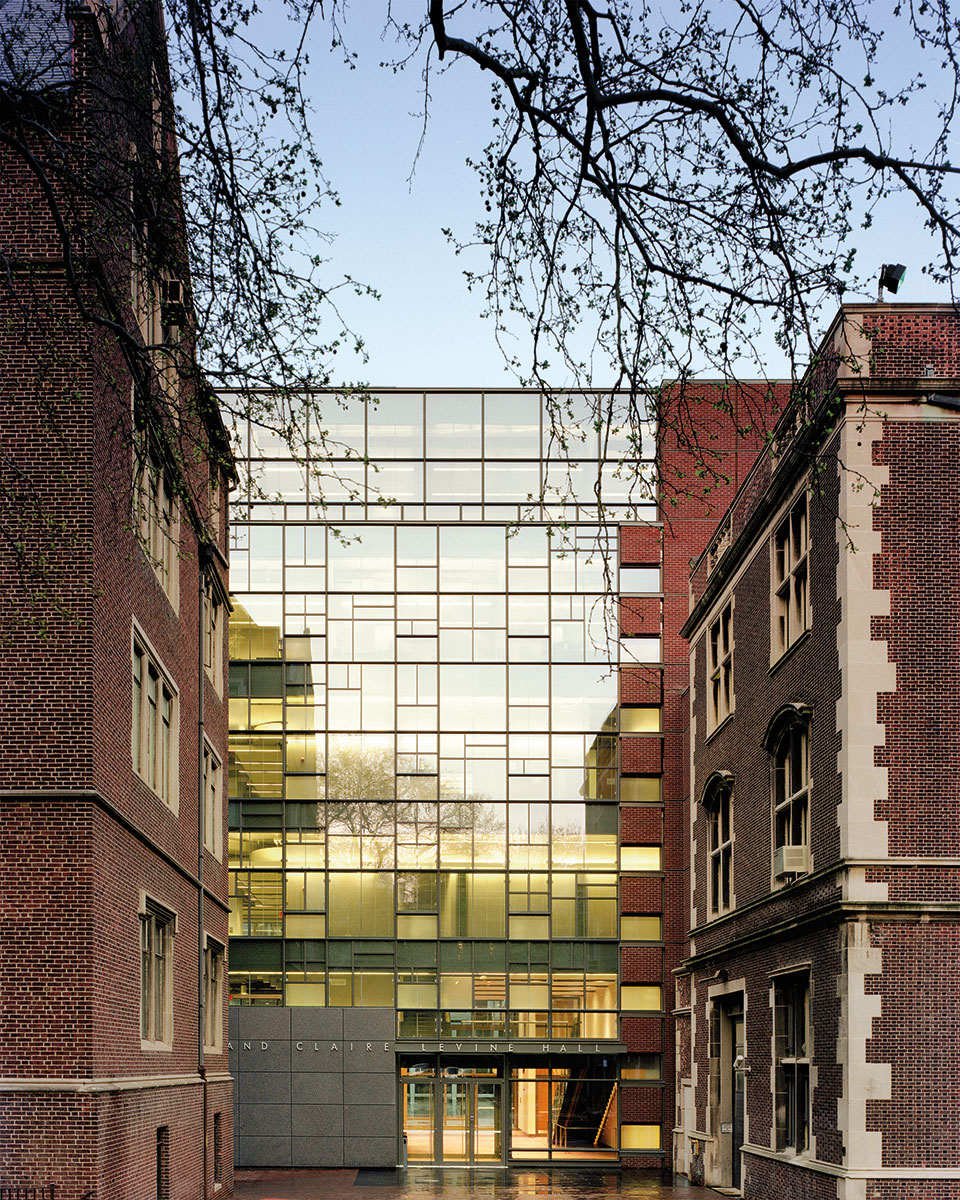
Eduardo D. Glandt served as the Dean of Penn. Engineering from 1999-2015.
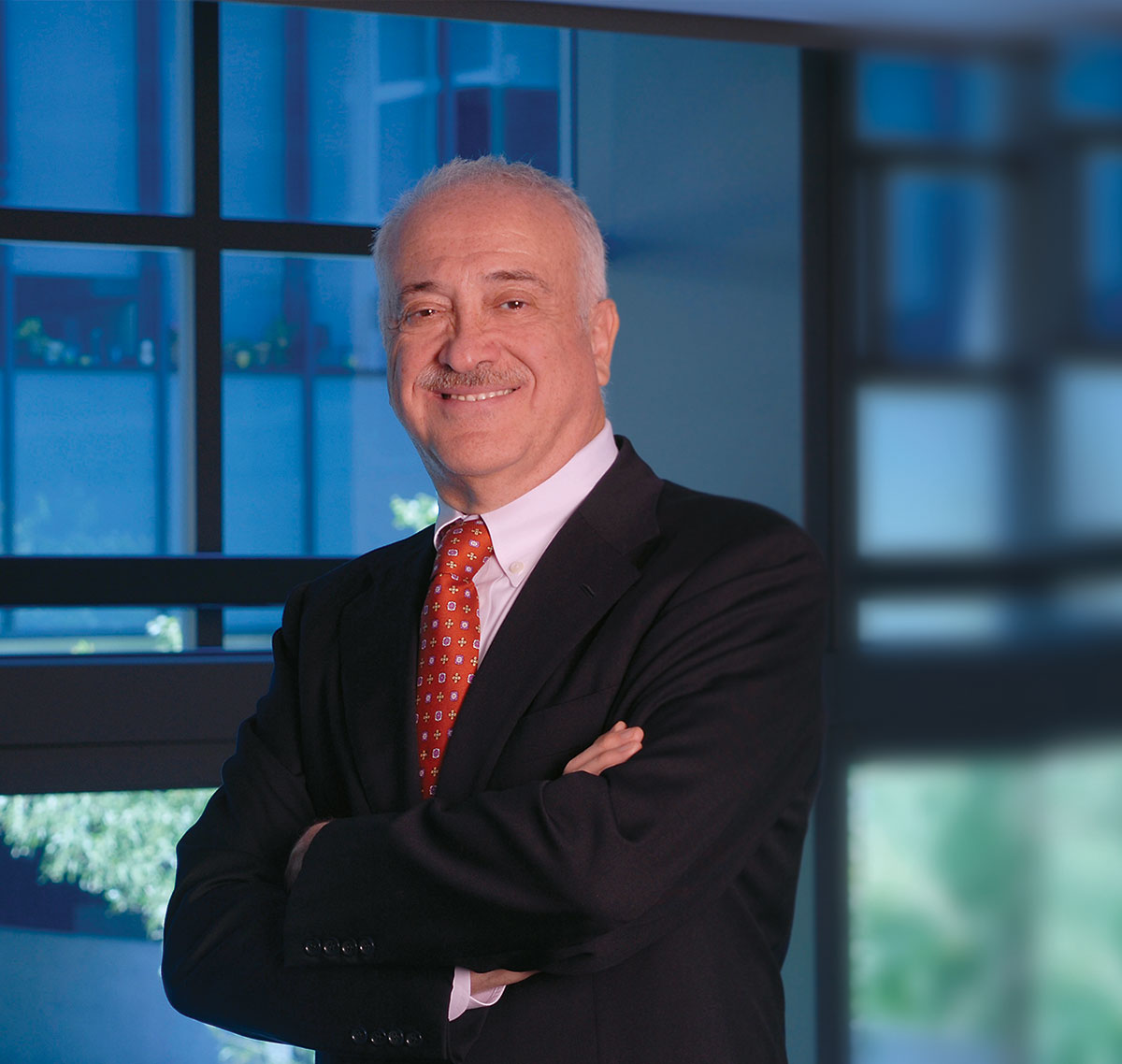
The Melvin J. and Claire Levine Hall ushered in a new era of Computer Science at Penn.

Skirkanich Hall opened as the new home to the Department of Bioengineering.

The Krishna P. Singh Center for Nanotechnology opened in 2013 as the region’s premier facility for advanced research, education and innovative public/private partnerships in nanotechnology.
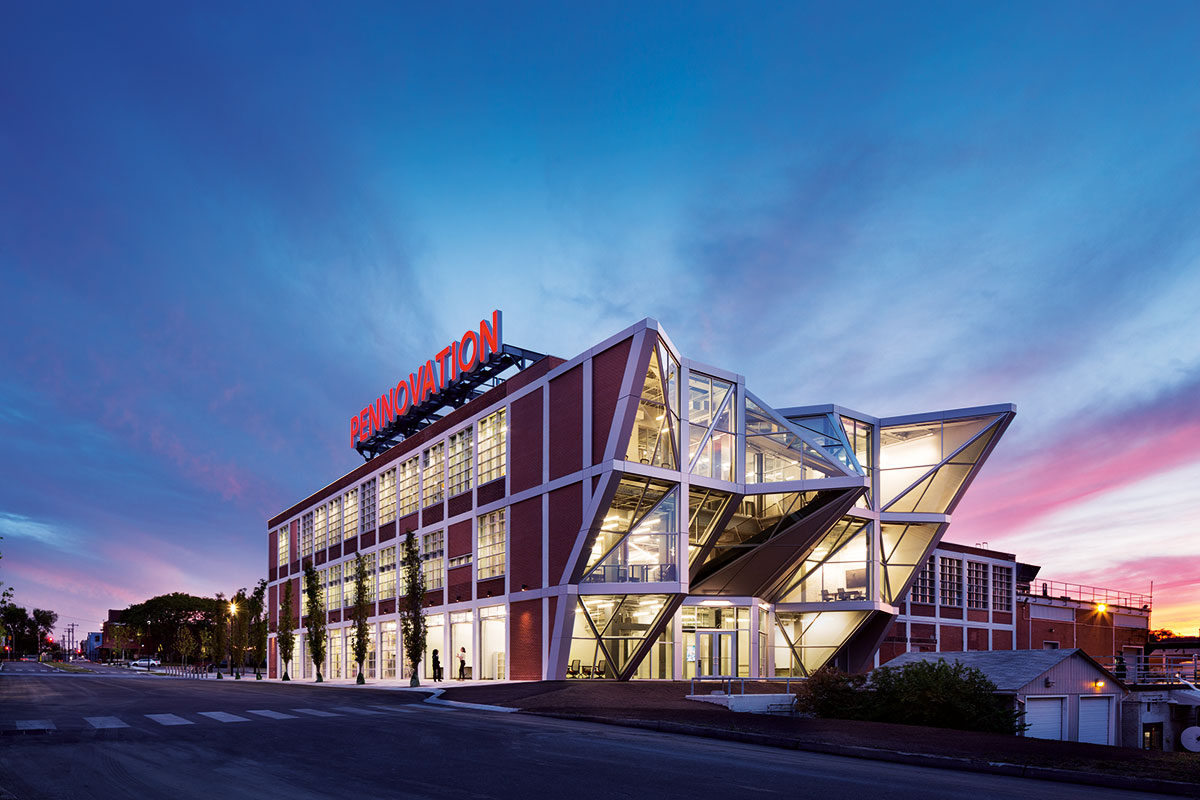
The Pennovation Center became the home for the Penn Engineering Research and Collaboration Hub (PERCH).
PENN ENGINEERING TODAY
Add your story
Students and faculty from varied backgrounds and perspectives continue to build on Penn Engineering’s foundation of innovation and excellence. How will you shape the future? How can Penn support your journey?
Feedback